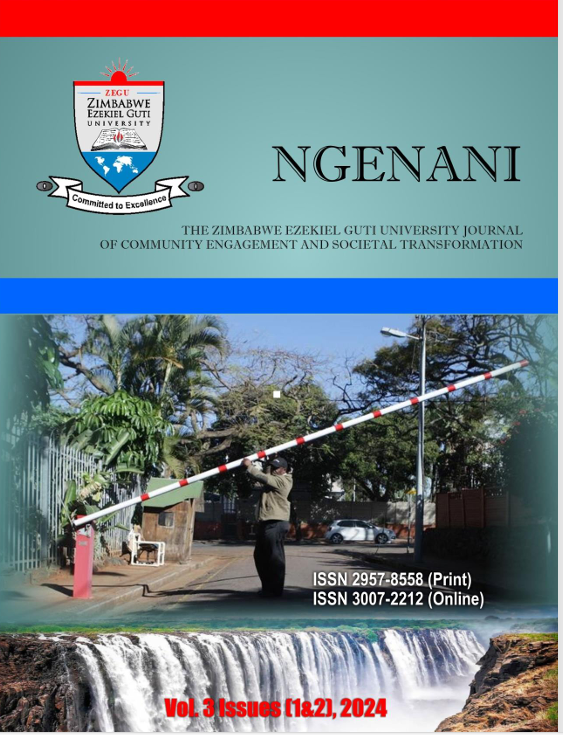Determining The Surface Water Quality Changes Induced By Underground Mining In Gwanda District Of Matebeleland South, Zimbabwe.
DOI:
https://doi.org/10.71458/ww6sws63Keywords:
water quality, underground mining, pollution, surface waterAbstract
The study engaged in an assessment of the implications of underground mining activities on the quality of surface water and its effects in Mtshabezi community Gwanda District of Matebeleland, South of Zimbabwe. The research adopted a mixed method approach that utilised both qualitative and quantitative approaches for in depth fact finding. The qualitative approach used depended on open ended questions, structured interviews, direct field observations while the quantitative approach used depended on closed ended questions, laboratory testing of water samples and use of statistical tools such as SPSS version 22.0 for data analysis. Water samples were collected to test for physiochemical parameters (temperature, pH, cyanide and concentration of Zn, Ni, Fe and Cu). The research identified the main pollutants in Mtshabezi River were caused by mining processes at Blanket mine and the main river contaminants were effluent deposited during and after gold processing is done through oxidation. It was observed that tailing dams are also a source of contaminating surface water because they contain effluents with un-extracted cyanide, mercury, sulphide, copper and iron among other chemicals that are used during blasting, gold extraction and processing. Results from the tests conducted show that nitrates ranged from 3.5 and 8.4 that is within the range of WHO guideline of 10mg/l. Iron concentration ranged from 0.2 to 7.3mg/l in all selected sites and this impacted on the lives of the people, their livelihoods, livestock and welfare. The study recommends regular monitoring of surface water sources undertaken by EMA and sub-catchment councils to ensure the quality of water is not compromised.




